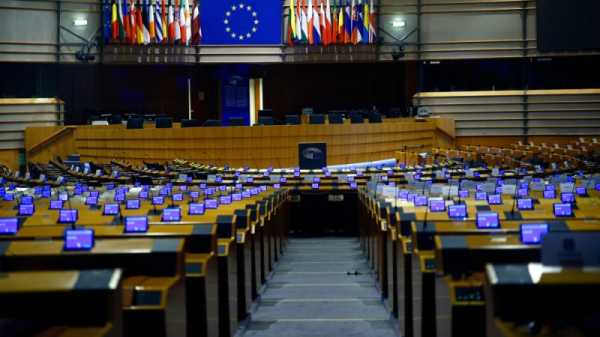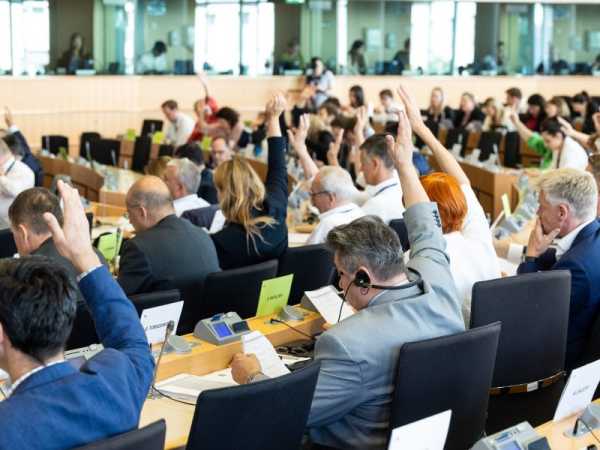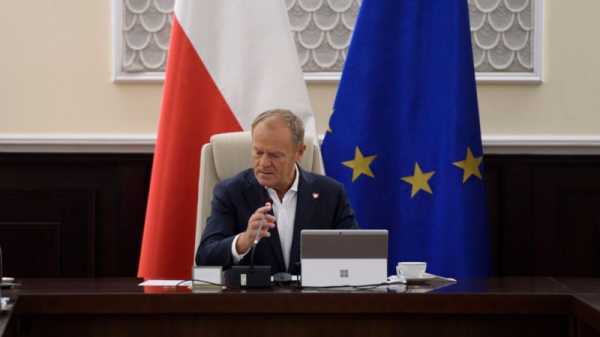
The European Parliament secretariat has prepared a ‘reflection paper’ – exclusively seen by Euractiv – addressed to political groups with concrete examples on how to reshape the Parliament’s committees in the next legislative mandate.
The new organisation plan was delivered to the working group inside the Conference of Committee Chairs (CCC), a political body that has a big say in coordinating the work of the Parliament’s internal committees – which do the essential preparatory works on reports and dossiers ahead of their approval in the plenary.
The European Parliament is currently organised into 20 permanent committees, with four sub-committees that are each linked to a permanent one, but with no legislative powers. In addition, there are temporary committees dealing with specific subjects created on ad hoc basis.
A major reform of the Parliament’s committee structure has been mulled over by the European lawmakers and, if approved before the end of this legislative mandate, will lead to major changes in the whole parliamentary legislative process once the new term starts after the EU elections in June.
The reflection paper, filed in mid-September and obtained by Euractiv, proposes to halve the number of committees as a solution to solve the many conflicts of competencies frequently arising among committees.
Under the current rules, some legislative proposals filed by the European Commission end up falling under the scope of more than one committee. In these cases, the European Parliament administration is tasked with sorting out the conflict and deciding whether to allow a share of competencies or just assign the file to a specific one.
The organisation plan proposed by the secretariat will, on one hand, simplify the workload of the committee attribution and get rid of sub-committees. However, it would also reinforce the decisional power of the administrative bodies and concentrate the power of the legislation on fewer MEPs.
In discussing the committee reform, parliamentarians are called to find a balance between a much-needed simplification and the risk of concentrating powers in internal administrative bodies which could also lead to new forms of internal conflict.
The last time the European Parliament reformed its committee organisation was almost 20 years ago. According to the document seen by Euractiv, the main objective of this reform should be to “modernise” the structure to mirror it more closely to current society.

LEAK: EU Parliament mulls creating new ‘ad hoc’ committees with lawmaking powers
The European Parliament is considering introducing ‘ad hoc’ committees with legislative powers for “legislative proposals falling within the competence of more than three committees”, according to a document seen by EURACTIV.
‘Fusion’ proposals
In its paper, the secretariat proposed how to merge competencies by reducing the number of committees to only 15 – and in addition other five horizontal committees.
For instance, ‘International affairs and enlargement’ would be the name of the new foreign affairs (AFET) committee, dealing with EU foreign policy in general, and more specifically, overseeing the work of the EU External Action Service (EEAS), relation with third countries, and other multilateral bodies.
In addition, it would work on accession processes and EU international agreements – in its field of competencies – and it would coordinate the work of EU delegations.
A committee on ‘international partnership and cooperation’ would merge the policies of economic and trade relations with third countries, together with development and humanitarian aid, in order to solve the clash of competencies between the current development (DEVE) and international trade (INTA) committees.
A new committee on ‘security and defence’ would aim at putting together ‘all aspects of defence’, including industry. It would include foreign interference and disinformation, eliminating the conflict of competencies with industry (ITRE), security and defence (SEDE), and the two temporary committees on foreign interference (INGE and ING2).
The ‘competitiveness, internal market and industry’ committee would put together policy areas such as competition, taxation, internal market legislation, small and medium-sized enterprises, and industrial policy. The work of the ‘internal market’ (IMCO), economy and monetary affairs (ECON) and ITRE committees would fall under its umbrella.
A separate committee for fiscal matters would be established, to eliminate conflicts among ECON, IMCO and committees for judicial affairs (JURI).
The internal body also mulls putting together a committee on ‘energy, transports and mobility’, to avoid conflict of competencies regarding ‘energy efficiency’ in the transport sector.
As an alternative to the latter, the document proposes putting energy together with climate, since energy “is the larger sector contributing to climate change”, the document states.
Two different options are presented for conflicts on agriculture: a committee that puts together ‘agriculture and fisheries’ or another where ‘food safety, agriculture and fisheries’ are merged, to solve conflicts among AGRI, ENVI and PECH – respectively, agriculture, environment and fisheries committees.
On health, the document proposes creating a committee on ‘health and food safety’ – if food safety would not be merged with the agriculture and fisheries one – or in alternative another one on ‘ecosystem, health and food safety’.
There is also a proposal to create a committee on ‘environment, oceans and forests’ as another option instead of the ecosystem one.
Only one committee would be dedicated to technology, putting together ‘digitalisation, innovation and new technologies’, grouping all topics that fall under the scope of “general digital infrastructure”.
The document also proposes to fuse employment (EMPL) and cohesion policy (REGI) committees into one called ‘employment, social inclusion, cohesion policy and regional development’.
Only one committee is proposed for ‘justice’ affairs, that would merge JURI and civil liberties committees (LIBE). In addition to eliminating JURI and IMCO conflict of competencies, a ‘justice and consumer’ committee was added as a possible alternative to ‘justice’.
The file also suggests a new committee to face migration with a “holistic” approach, called ‘citizenship, migration and home affairs’.
As an alternative to ‘justice’ and the migration committees, an overall committee is proposed to include all of their aspects of JURI, LIBE and IMCO, called ‘fundamental rights, security and justice’.
The proposal also suggests a committee on ‘research, media, education and culture’, combining the culture committee (CULT) with some parts of ITRE.
The final grouping will be composed of the budget (BUDG) and budget scrutiny issues (CONT), the latter defined as the ‘neutralised committee’ in the document.
Five horizontal committees are foreseen for the new structure, called ‘special committees’ on the rule of procedure, immunities, and legal matters, EU constitutional affairs, relations with citizens, gender equality and gender mainstreaming, and human rights and democracy.
[Edited by Gerardo Fortuna/Nathalie Weatherald]
Read more with EURACTIV

Polish election outcome could boost EU reform prospects, expert saysThe likelihood of a new pro-European government in Warsaw has brightened the prospects for the twin project of EU enlargement and reform, one of the experts behind the recent Franco-German enlargement report said, but warned change may still be a long way off.
Source: euractiv.com



